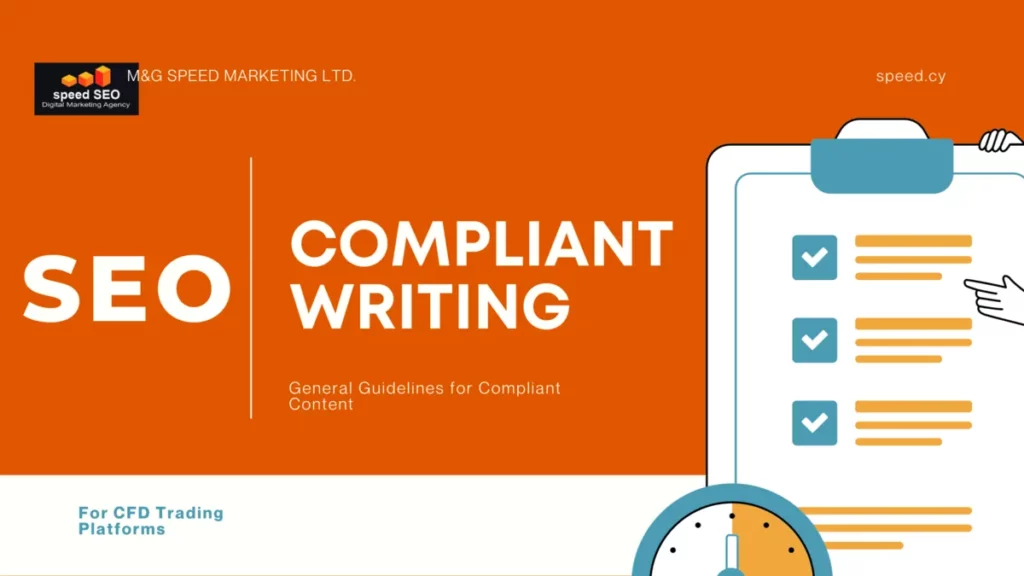In the fast-paced world of online CFD trading, creating compelling content is crucial for attracting new traders and keeping existing ones engaged. However, CFD platforms must strike a delicate balance between producing content that captures attention and adhering to regulatory guidelines. This is no easy feat.
Regulators like the FCA, ASIC, and CySEC want to ensure CFD platforms act responsibly by providing information that is accurate, transparent, and not misleading. They issue strict rules around marketing practices and promotional content. Acting negligently can lead to serious consequences including hefty fines, revoked licenses, and even criminal charges.
But overzealously dry, legalistic content won’t attract an audience either. Traders seek insights and education that are engaging. Driving registrations and engagement is necessary to sustain the platform and continue serving your audience.
This guide aims to help CFD trading platforms walk that fine line. It will cover key regulations and “dos and don’ts” for creating compliant, engaging content across different formats like blog posts, social media, video, and more.
By taking a proactive approach to compliance, CFD platforms can avoid fines, build trust, and produce content that attracts and empowers traders with valuable insights. Getting compliance right takes work, but the effort pays dividends.

Specifically, you will learn:
- Key regulations and risks around CFD content compliance
- Guidelines for writing accurate, transparent, non-misleading info
- Rules and best practices for compliant blog posts, social media, video and more
- How to make content compelling while avoiding hype or over-promotion
- Ongoing compliance tips for adapting to changing regulations
The guidelines herein are not exhaustive legal advice, but will highlight common pitfalls and provide a strong compliance foundation your legal team can build upon.
Let’s get started empowering your traders with content that informs, engages, and complies!
Why Compliance Matters for CFD Trading Platforms
Maintaining regulatory compliance is not just beneficial for traders – it protects your platform too. Here’s why:
- It safeguards your reputation. Traders expect transparency. Non-compliant content that misleads could undermine trust in your platform.
- It avoids legal troubles. Skirting regulations risks serious fines, revoked licenses, and legal action. Staying compliant keeps regulators content!
- It upholds market integrity. When platforms mislead traders, it can manipulate the market. Compliance maintains fairness and order.
The savvy CFD platform pros understand compliance is vital for sustainable, ethical operations. While it takes work, staying above-board ultimately serves your business and audience.
Now that we’ve covered why compliance matters, let’s explore specific guidelines and best practices for creating regulator-friendly CFD trading content.
General Guidelines for Compliant Content
When crafting any piece of content, keep these core compliance guidelines top of mind:
- Stick to accurate, unbiased facts. Avoid stretching the truth or omitting key details – transparency is key.
- Clearly disclose all risks upfront. Don’t downplay the substantial downsides CFD trading brings.
- Do not provide direct trading advice. Readers need education, not recommendations.
- Always identify as a CFD provider. Disclosing your vested interest builds trust.
- Follow all relevant regulations for your jurisdictions. Ignorance of the law is no excuse here!
👍Tip: Do a final compliance check of each piece before publishing. Prevention beats penalties every time.
Meeting the above guidelines requires extra effort but pays dividends long-term. Remember, compliance issues can compound over time. A proactive approach prevents problems down the road.
Now that we’ve covered core compliance guidelines, let’s look at rules and best practices for specific content formats.

Rules for Specific Content Types
Compliance principles apply broadly, but requirements do vary across content formats. Here are regulator-friendly tips tailored to different mediums:
Blog Posts:
- Stick to educational content, avoid overt promotions.
- Disclose risks prominently, don’t just focus on potential rewards.
- Avoid hyping returns or conveying urgency to trade.
Social Media:
- Give balanced info, don’t cherry-pick data showing only positive outcomes.
- Ensure claims are factual, avoid misleading hype or speculation.
- Use risk warnings, don’t just post flashy profit numbers.
Video:
- Scripts should provide context, don’t just highlight big wins.
- Use verbal + written disclaimers on the risks involved.
- Avoid dramatization that overstates potential gains.
Emails:
- Lead with value, not exaggerated promotions making big promises.
- Ensure risk disclosures are prominent, not buried in small print.
- Avoid creating false urgency or using aggressive calls to action.
Ads:
- Comply with all guidelines from regulators on disclaimers.
- Don’t use inflated claims or profit projections.
- Prioritize education over flashy hype.
👍Tip: Seek legal review of any high-visibility content before publishing. An ounce of prevention!
Now that we’ve covered content creation, let’s look at ongoing practices for maintaining compliance.
Best Practices for Ongoing Compliance
Compliance is not just a one-time concern – it requires ongoing diligence:
- Regularly review and update existing content to ensure it remains accurate and compliant. Outdated materials increase risk.
- Monitor regulations for changes so you can update guidelines accordingly. Subscribe to regulator newsletters.
- Seek periodic legal review of processes to identify any gaps. An external audit provides valuable perspective.
- Use compliance checking software to systematically identify issues at scale. Automation makes it easier.
- Vet any external contributors thoroughly. Guest posts are great, but ensure authors follow guidelines.
👍Tip: Designate an internal compliance lead to coordinate efforts and train staff. Shared responsibility is key.
Proactive, ongoing compliance practices enable CFD platforms to reap the benefits of content marketing while avoiding regulatory mishaps.
Let’s recap the key lessons around creating compliant, compelling CFD trading content.
Key Takeaways on Compliance
If you remember nothing else, remember this:
- Compliance protects your platform and builds trust with traders. Take it seriously.
- Stick to dry facts – avoid exaggerated hype or misleading claims.
- Disclose risks clearly. Don’t gloss over substantial downsides.
- Follow all regulations and apply guidelines consistently across content types.
- Make compliance processes ongoing, not just a one-time concern.
Creating compliant CFD trading content requires extra effort, but pays off through reduced risk, improved reputation, and satisfied traders. So tackle compliance proactively and reap the rewards!
For further guidance, don’t hesitate to reach out. We’re happy to provide compliant guest posting opportunities or give feedback on your internal guidelines.
Frequently Asked Questions
Why is it important for CFD trading platforms to avoid fines from non-compliant content?
Fines from non-compliant content can be substantial (millions in some cases) and inflict significant reputational damage. Proactive compliance practices help avoid these completely avoidable costs and protect your platform’s bottom line and reputation.
Why should CFD trading platforms always include risk disclaimers?
- CFD trading carries significant risks that must be disclosed.
- Risk disclaimers help traders evaluate if CFDs suit their risk tolerance.
- Prominent risk disclosures also reduce platforms’ legal liability.
Why should CFD trading platforms always identify themselves as such?
- Identifying as a CFD platform builds trust through transparency.
- It ensures readers can properly assess any claims you make.
- Readers can evaluate potential bias, protecting your credibility.





